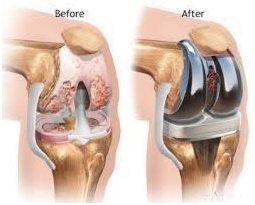Jyoti Nursing Home in Jaipur Provides a joint replacement can relieve pain and help you live a fuller, more active life. Once you and your doctor have determined that joint replacement is right for you, you will need several weeks to prepare, both physically and emotionally. By planning ahead, you can help ensure a smooth surgery and recovery.
After surgery, you may expect life to return to the way it was — but without the pain. In many ways, you are right. But it will take time. Your doctor will encourage you to use your "new" joint as soon as possible. Although it may be challenging at times, following your doctor's instructions will speed your recovery.

Most of the surgeries come with their own risks and benefits. With a minimally invasive surgery, however, the risks are reduced when compared to its counterpart, as the infection rates and chances of failure are automatically reduced.